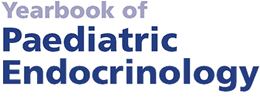ESPEYB16 4. Growth and Growth Factors New Paradigms (2 abstracts)
4.12. Expression of insulin-like growth factor I and its receptor in the liver of children with biopsy-proven NAFLD
Alisi A , Pampanini V , De Stefanis C , Panera N , Deodati A , Nobili V & Cianfarani S
Research Unit of Multifactorial Genetics and Epigenetics, 'Bambino Gesù' Children’s Hospital-IRCCS, Rome, Italy. valentina.pampanini@ki.se.
To read the full abstract: PLoS One. 2018;13:e0201566.
NAFLD is a multifactorial disease characterized by an abnormal accumulation of fat in the liver without a history of significant alcohol intake. NAFLD is the most common form of chronic liver disease, affecting 30% of adults and 10% of children in the USA [1]. Alarmingly, its prevalence is increasing worldwide paralleling to the increased incidence of obesity in both adults and children. Insulin resistance, oxidative stress and inflammation are involved in the development of NAFLD. No pharmacological therapy is available for this condition, diet and lifestyle representing the main targets for effective interventions.
There is evidence that the IGF system is involved in NAFLD pathogenesis. GHD adults have a higher prevalence of NAFLD/NASH, and GH replacement therapy reduces liver steatosis [2]. Reduced IGF-I expression is associated with NAFLD development and progression [3], and both adults and children with NAFLD have lower circulating IGF-I levels [4,5]. Systemic IGF-I administration improves steatosis, inflammation, and fibrosis, thus suggesting that overall the IGF system exerts a hepatoprotective effect [6]. In physiological conditions, hepatocytes lack IGF-IR [2] which, on the contrary, is abundantly expressed in liver diseases such as cancer, hepatitis and cirrhosis.
This study was performed in a large population of 45 children with biopsy-proven nonalcoholic fatty liver disease (NAFLD), and demonstrated that both IGF-I and its receptor (IGF-IR) expression correlate with the severity of liver fibrosis, being highly expressed in the advanced stages of liver disease. The expression of IGF-I and IGF-IR was particularly increased in hepatic stellate cells that play a key role in fibrosis. These results support the concept of a beneficial effect of IGF-I on the liver, the local release of IGF-I coupled with IGF-IR expression representing a response to the damage to favor tissue repair.
References: 1. Wree A, Broderick L, Canbay A, Hoffman HM, Feldstein AE. From NAFLD to NASH to cirrhosis-new insights into disease mechanisms. Nat Rev Gastroenterol Hepatol. 2013;10:627–36.
2. Takahashi Y. The Role of Growth Hormone and Insulin-Like Growth Factor-I in the Liver. Int J Mol Sci. 2017;18(7).
3. Hribal ML, Procopio T, Petta S, Sciacqua A, Grimaudo S, Pipitone RM, et al. Insulin-like growth factor-I, inflammatory proteins, and fibrosis in subjects with nonalcoholic fatty liver disease. J Clin Endocrinol Metab. 2013;98:E304–8.
4. Arturi F, Succurro E, Procopio C, Pedace E, Mannino GC, Lugara M, et al. Nonalcoholic fatty liver disease is associated with low circulating levels of insulin-like growth factor-I. J Clin Endocrinol Metab. 2011;96:E1640–4.
5. Cianfarani S, Inzaghi E, Alisi A, Germani D, Puglianiello A, Nobili V. Insulin-like growth factor-I and -II levels are associated with the progression of nonalcoholic fatty liver disease in obese children. J Pediatr. 2014;165:92–8.
6. Adamek A, Kasprzak A. Insulin-Like Growth Factor (IGF) System in Liver Diseases. Int J Mol Sci. 2018;19(5).



